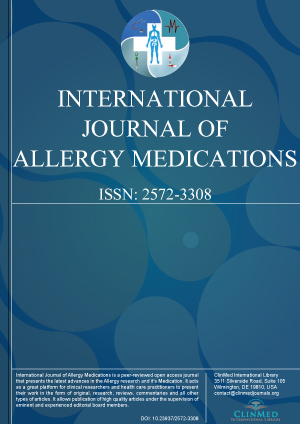Current Issue
Open Access DOI:10.23937/2572-3308.1510041
Clinical and Spirometric Characteristics of Premenstrual Asthma
S Aissani, I Ararem, H Haouichat, ME Haffaf and A Zitouni
Article Type: Research Article | Indexed Archive: Volume 5
Article Formats
- Full Article
- XML
- EPub Reader
Open Access DOI:10.23937/2572-3308.1510040
Anaphylaxis to Water Caltrop (Singoda Flour): A Case Report
Omar E Mohamed, Toni Osborne, Jane Heslegrave and Mamidipudi Thirumala Krishna
Article Type: Case Report | Indexed Archive: Volume 5
Article Formats
- Abstract
- Full Article
- XML
- EPub Reader
Open Access DOI:10.23937/2572-3308.1510039
Marianne Skov
Article Type: Short Communication | Indexed Archive: Volume 5
Article Formats
- Full Article
- XML
- EPub Reader
Open Access DOI:10.23937/2572-3308.1510038
Germain N, Gerth van Wijk R, Aballea S, Abetz-Webb L, Domdey A, Romano M and Toumi M
Article Type: Research Article | Indexed Archive: Volume 5
Article Formats
- Abstract
- Full Article
- XML
- EPub Reader
Open Access DOI:10.23937/2572-3308.1510037
H1-Antihistamines for Allergic Diseases: Old Aged but Not Old-Fashioned Drugs
Luisa Ricciardi, Fabiana Furci and Isola Stefania
Article Type: REVIEW ARTICLE | Indexed Archive: Volume 5
Article Formats
- Full Article
- XML
- EPub Reader

Volume 5
Issue 1
Issue 1
